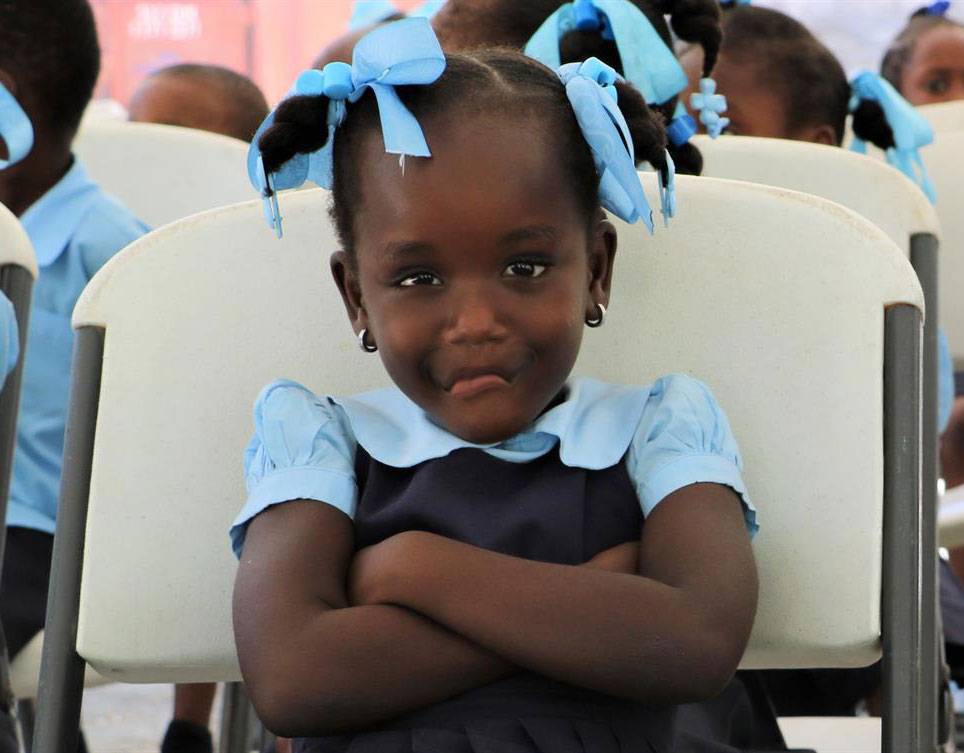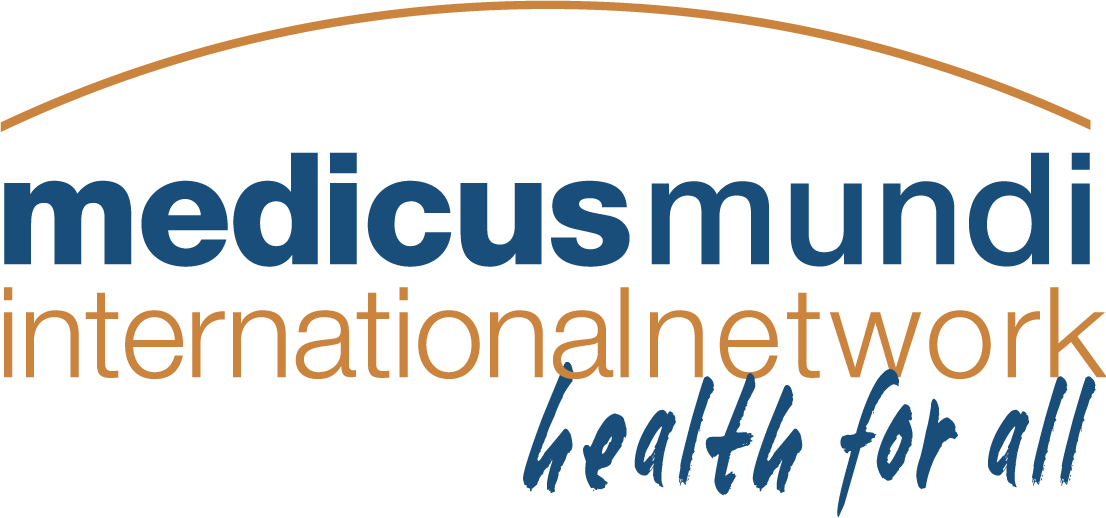 I just read the outline of the “Global Action Plan for Healthy Lives and Well-being” (GAP) and the “discussion paper on Community and civil society engagement”, both topics of a public consultation (17-30 June 2019, see here). And I also read again the blog “Global action or dissatisfaction?” written some months ago by my G2H2 colleagues Mareike and Hannah from Bread for the World. And, yes, “we are still not amused”.
I just read the outline of the “Global Action Plan for Healthy Lives and Well-being” (GAP) and the “discussion paper on Community and civil society engagement”, both topics of a public consultation (17-30 June 2019, see here). And I also read again the blog “Global action or dissatisfaction?” written some months ago by my G2H2 colleagues Mareike and Hannah from Bread for the World. And, yes, “we are still not amused”.
By Thomas Schwarz*
I admit that I am a bit biased (or at least I have some strong reservations regarding some of the GAP “partners”), and I also disclose that I just arrived back at my office after some intensive days of discussing, with an incredibly inspiring group of civil society colleagues and in a protected space, “how we can best challenge the unaccountable influence of donors in health (financing) decision-making, thereby mitigating negative impacts on access and rights-based responses to health”.
And now, this strange coalition of some of the biggest “global health donors” (take the Global Fund, GAVI, GFF, BMGF) and multilateral agencies working in the field of health (take WHO, UNICEF, UNAIDS) presents an outline of their plan of how to further strengthen their collaboration (and therefore their unified power?)…
Here some initial assessments, hoping that they will trigger a debate and inspire civil society colleagues to provide a formal input to the consultation (or not…).
The GAP outline
It remains obvious that the GAP process is led top-down, set up in a rush in autumn last year in view of providing tangible output by September 2019 when it should be launched at the UN General Assembly. For me, under these conditions, the resulting Global Action Plan will remain “their” plan, the plan of the GAP partners, even if they will pretend that it was shaped in an inclusive process, referring also to the current consultation.
Regarding the idea behind the GAP itself to connect 12 major global health organizations (see the list on the GAP website) and to improve their coordination, this is fine with me as long as it is done in the spirit (and within the limitations) of the good old aid effectiveness agenda to which the “GAP outline” now explicitly refers. But the process has also its risks and unwanted side-effects.
Allow me to focus on these.
Good news first: The narrative around alignment has become a bit less confusing and contradictory compared with the document “Towards a Global Action Plan” that was published last year. That earlier document started with the same commitment to “align our joined-up efforts with country priorities and needs” (page 2). But then, in its section on alignment, it entirely focused on how to better cooperate among the GAP partners. Today it looks as if, in the “initial discussion” to which the outline refers, the GAP partners were severely challenged (bashed?) by country governments on this incoherence. In the current outline, “alignment with national plans, priorities and strategies” is featured throughout the paper, and the need to “ASSESS” the needs, priorities and gaps identified by countries through a process of engagement and dialogue is added as forth “big A” to the initial list of “ALIGN, ACCELERATE, ACCOUNT”.
Bad news is that accountability is still mainly framed as a rather abstract process of measuring progress in the achievement of “50 health-related targets” in the SDG framework, and not as being accountable for their own particular role, contributions and behaviour towards the countries and the people they intend to serve. But at least, compared with the “Towards…” document, there is now a section added on “Tracking joint actions”.
Good or bad news? After a year of working together on the GAP, the partners clearly admit their diversity in nature, role/field of activity and institutional setup and culture and the challenges related. Obviously, they also clearly underestimated the effort of producing a meaningful cooperation plan within a year, and now they run out of time.
And is still not clear how the GAP process relates, at least for the UN agencies involved, to the ongoing reform of the United Nations development system. WHO aims at aligning its own institutional transformation with the UN reform, but the other partners? And the “consortium”?
All in all, there remains a lot of “terra incognita” and unanswered questions in the GAP outline, and entire sections are still missing. The related bad news is that, due to the overall setup of the drafting process, we will only see these sections when there is no further opportunity to comment on them.
The “discussion paper” on community and civil society engagement
Written by nice and interested people at UNAIDS and WHO and based on input provided by some good civil society colleagues through various channels and including a one-day consultation in New York on 30 April, and with some process co-leadership by a “civil society advisory group” set up by the UHC2030 CSEM, this lengthy document contains some really good language and might be, independent from the outcome of the GAP planning, an important reference for a debate that still needs to be properly launched and held.
My shortlist of main worries:
The New York „non-state actors” consultation on the GAP was mainly a kind of business association event of GAVI, GFF, Global Fund, World Bank, UNAIDS etc. and the NGOs already engaged in their civil society mechanisms at a global or national level. This certainly helped to be very specific on particular challenges of inclusiveness of country specific structures and processes related to these actors (and, more generally, to “aid”), but it also limited the perspective, as I experienced as an “outsider” participant, not being engaged in any of these Global Health Initiatives. This biased “insider” lens becomes also obvious if we look at the discussion paper.
If the civil society engagement mechanisms and platforms the discussion papers refers to are those built around the Global Health Initiatives, their promotion risks to contribute to a further “NGOization” or at least donor driven setup of what should be a social and political struggle for health.
These mechanisms, often dominated by international NGOs, are already now distorting or damaging the existing and often fragile democratic spaces and processes at a national level where people (organized in various ways) and governments are expected to “negotiate”, as right holders and duty bearers, the terms of their social contract for health.
The same limited perspective is visible when it comes to the expectations regarding the GAP partners: OK, they should systematically engage with communities and civil society and contribute to their strengthening, but what else?
The role and “unwanted” contributions of the big and powerful Global Health Initiatives are not questioned, not even implicitly, and their money and power is seen to be, by nature, good and helpful. This was already obvious in the New York consultation (read the report here) when some NGO colleagues of the GAVI and Global Fund lobbies promoted the idea of asking GAP partners to make good practices of engaging with civil society a (another) condition for getting “aid”.
This naïve view of the global health initiatives as stewards of good governance and promoters of democracy ignores that these actors are more often rather part of governance and policy failures, distorting national policies and structures, their main legitimacy being their huge economic power (and no, let us not talk here about their great achievements).
Finally, the discussion papers ends with the proposal to set up a “virtual platform” or “global clearing-house” to “empower communities and civil society, particularly at the country level, to more strategically mobilize around, engage in and influence discussions in ensuring health and well-being for all.” (action 4, page 5).
Before endorsing such a proposal, there are some questions that need to be urgently answered, such as:
- Do we really need such a global clearing house?
- Who would own it? To who would it be accountable? How shall it be governed? Who will benefit? Who risks to be once more excluded? How to deal with issues of access, inclusiveness, power, diversity within civil society?
…and not take the easiest answer as the best one.
…and consider some lessons learnt with such global structures.
So back to step one
The story of the current consultation told on the CSEM website reads as follows: “Following feedback from civil society that engagement in the development of the GAP has been limited, with inconsistent outreach and inclusion of communities and civil society, the Civil Society Advisory Group for the GAP wrote a letter to the heads of the 12 signatory agencies. The letter requested a structured opportunity to provide feedback on the draft plan before it is released in September. The group received a response from Dr. Tedros Adhanom Ghebreyseus, WHO Director-General, on behalf of the 12 agencies. Dr. Tedros affirmed WHO’s openness to additional input from civil society on the draft plan, as well as the potential for further discussions on GAP implementation, accountability, and advocacy. This public discussion period is in part a response to this important advocacy from civil society.”
This sounds great, doesn’t it? Nevertheless, also this public consultation and the “communities and civil society discussion paper” remain fragmented efforts with lots of limitations and shortcomings, and much of tokenism. And yes, the GAP partners will, at the end of the process, refer to the “inclusive consultation”.
So it is all up to me/you/us to decide once more on how to handle this eternal tension between providing meaningful last minute input and feeling a bit co-opted and manipulated. Over to you then.
………..
Published on 19 June 2019 as G2H2 blog
*Thomas Schwarz is Executive Secretary of the Medicus Mundi International Network and the Geneva Global Health Hub (G2H2) and a member of the G2H2 working group on WHO and global health governance and financing.
